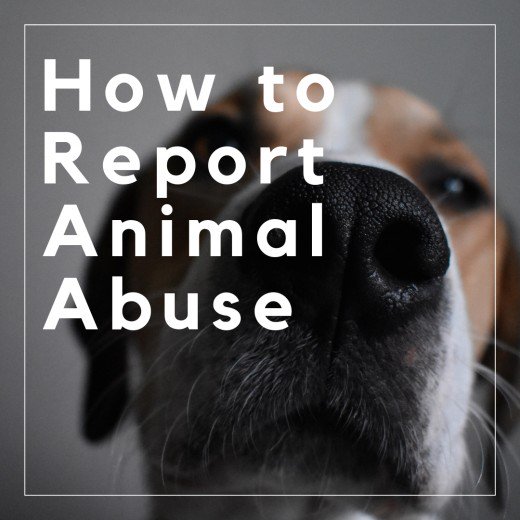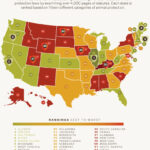In an era where social media platforms have become commonplace avenues for expression, they have paradoxically also become conduits for the dissemination of distressing content, including animal cruelty. Instagram’s visual-centric format allows users to encounter a wide swath of posts that can sometimes depict acts of inhumanity toward animals. Consequently, it is paramount to understand the protocols involved in reporting such behavior effectively. This article delineates the methodologies and practices that can be employed to rally against animal cruelty on this popular social platform.
Understanding Instagram’s Reporting Mechanism
Instagram has instituted a reporting system that enables users to flag content deemed inappropriate or harmful. Initially, familiarizing oneself with the platform’s interface is crucial. The reporting feature is embedded within each post, accessible through three vertical dots positioned in the upper right corner of the screen. Activating this feature will present several options, including the ability to report the post as ‘Hate Speech,’ ‘Harassment,’ or ‘Self-Injury,’ among other categories. When it comes to animal cruelty, the most suitable option is typically ‘It’s inappropriate.’ This triggers a review process by Instagram’s content moderation team.
Visual and Contextual Content: What Works
When encountering questionable material, not all formats will be treated with the same gravity by the Instagram authorities. Photographic evidence showcasing overt acts of cruelty—such as animal fighting, neglect, or abuse—is likely to elicit a more prompt response. In contrast, vague or ambiguous posts that merely imply cruelty without providing hard evidence may not garner the same level of attention. Hence, if the content reveals distressing scenarios—animals in peril or exhibiting signs of neglect—it is imperative to act swiftly. The visual component acts as a persuasive element in advocating for the rights of these voiceless beings.
Moreover, stagnant images may not singularly capture the gravity of a situation. Videos that document ongoing acts of cruelty, albeit recorded discretely, can serve to significantly bolster the case made against an account. Moving images create a visceral impact and can evoke a sense of urgency that static photographs often lack. Thus, submitting visual evidence rich in saturation and detail greatly increases the likelihood that the content will be acted upon.
Sharing Context: Narrative Importance
While visual content is essential, contextualizing the evidence through a well-structured narrative can enhance its efficacy. Accompanying your report with a brief but poignant description can significantly augment its impact. Articulating the nature of the abuse, the involved parties, and the specific emotions that such actions inspire can help moderators comprehend the situation wholly. The narrative should be devoid of hyperbole but instead focus on factual descriptions and the emotional turmoil that the act of cruelty inflicts upon both the animals and the audience.
Utilizing hashtags related to animal rights—such as #AnimalCruelty, #StopAnimalAbuse, or #AnimalRights—can amplify visibility. When these posts gain traction, they catch the attention of animal welfare organizations and other advocates who may intervene on behalf of the affected animals. The communal effort can thus manifest into a larger protest against cruelty on social media.
Emailing Instagram Directly: A More Formal Approach
Sometimes, direct action is necessary. If your reports yield little to no response, consider drafting a formal complaint email to Instagram’s support team. Focus your correspondence on summarizing the instances of cruelty observed and emphasizing the importance of their intervention. Be sure to include relevant usernames, post links, and a brief overview of the context surrounding the instance of cruelty. While this may require more time and effort, it asserts a more formal expectation for accountability.
What Doesn’t Work: Common Pitfalls to Avoid
In the digital crusade against animal cruelty, several pitfalls can hinder progress. Firstly, reporting posts that lack substantive evidence of animal cruelty may dilute the effectiveness of the reporting feature. Spurious claims or the over-reporting of benign content can lead to a credibility loss, rendering genuine reports as potential noise in the system.
Secondly, succumbing to emotional outrage and resorting to abusive language in comments or direct messages does little to foster constructive outcomes. Effective activism hinges on a respectful yet assertive dialogue, aiming for resolution rather than hostility. Additionally, be cautious not to engage in public shaming, as this may detract from the gravity of the issue and inadvertently hinder the mission of raising awareness about animal welfare.
Seeking Alternative Avenues for Action
While Instagram serves as an important platform for raising awareness, it is essential to recognize that advocacy transcends social media. Immediately reporting animal cruelty on Instagram should ideally be complemented by other forms of action. Reach out to local animal welfare organizations, law enforcement, or involved authorities. Reporting to the local humane society or animal control may provide even more effective results in many cases.
Networking with fellow animal advocates can also catalyze a larger collective movement. Forming coalitions with local shelters and rescue organizations can yield additional resources and manpower compounded with knowledge to effect genuine change.
Conclusion: Use Your Voice Wisely
In conclusion, reporting animal cruelty on Instagram requires a nuanced understanding of the platform’s reporting system coupled with an effective strategy that utilizes both visual and narrative components. By navigating these complexities judiciously, individuals can not only report instances of inhumanity but can become active participants in a wider movement against animal cruelty. In a world increasingly shaped by digital narratives, using one’s voice to combat cruelty not only helps safeguard vulnerable creatures but fosters a culture of empathy and respect. Every report counts; each voice matters.








